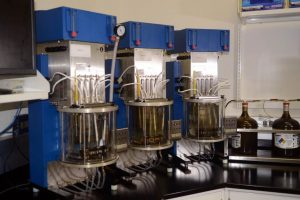


Deviations between fresh and used grease in terms of the content and composition of the additive package or the thickener show that another grease is being used.Possible impurities, such as silicon (dust), calcium (lime) or hard water deposits help to identify the causes of wear.Increased iron and chromium values indicate that a rolling bearing has been subject to wear copper, lead and tin show corrosion or abrasive wear from bearing cages.Impurities: Silicon, calcium, sodium, potassium, aluminium, cadmium, bismuth.Īdditives, thickener or soap levels: Lithium, magnesium, calcium, phosphorus, zinc, barium, silicon, aluminium, molybdenum and boron. Wear metals: Iron, chromium, tin, copper, lead, nickel, aluminium, molybdenum and zinc as well as possible levels of vanadium, titanium, silver, antimony, manganese and tungsten. These provide information in mg/kg about wear, impurities, thickeners and additive levels in the sample. After homogenisation, OELCHECK looks at 27 elements.


 0 kommentar(er)
0 kommentar(er)
